
Piercing the veil
A new exhibition at Buxton Contemporary finds a rich complexity in the shadowy terrain between life and death.
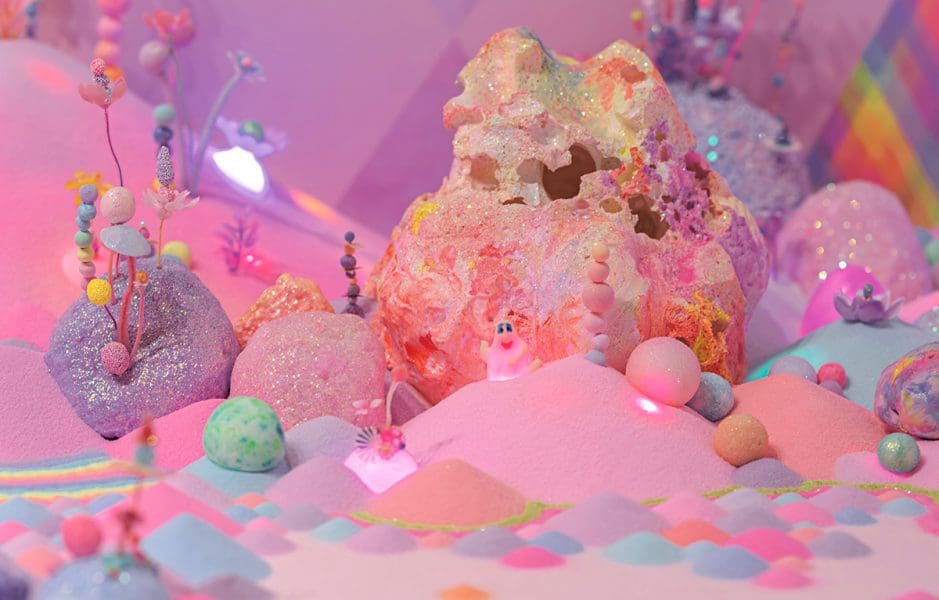
Pip and Pop, Newest New World, Shinsegae Gallery, Korea, 2015, mixed media. Photograph by Park Myungrae.
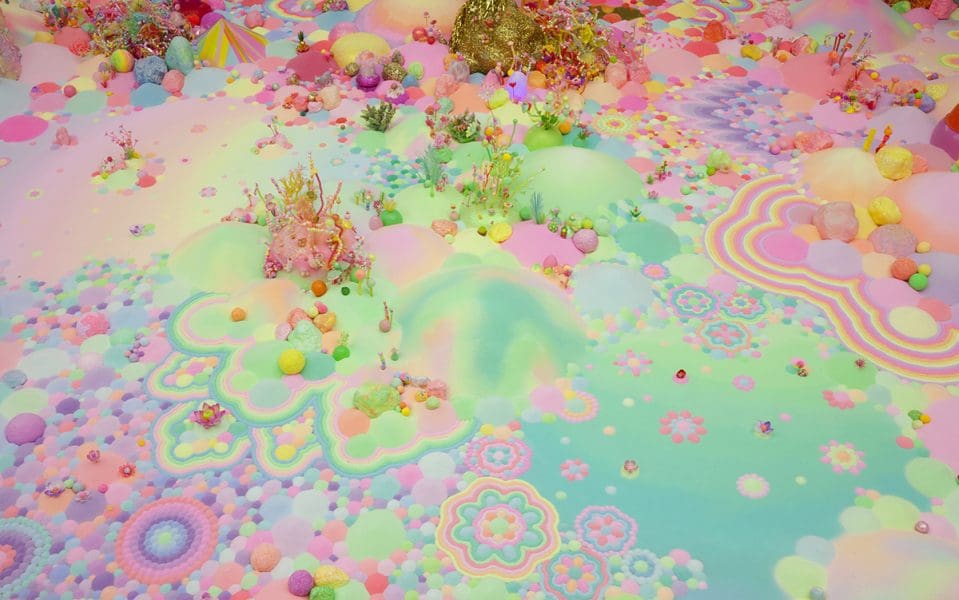
Pip and Pop, Journey in a Dream, Shinsegae Gallery, Korea, 2015, mixed media. Photograph by Park Myungrae.
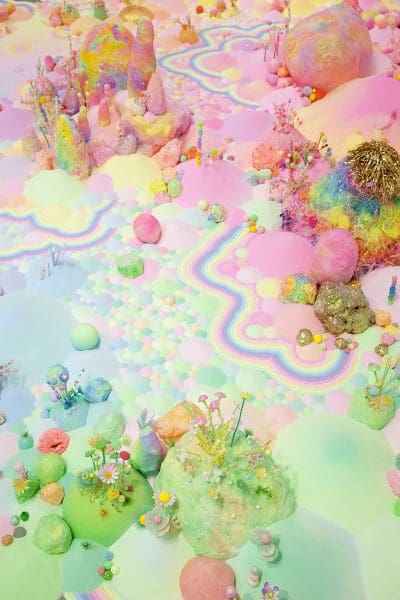
Pip and Pop, Journey in a Dream, Shinsegae Gallery, Korea, 2015, mixed media. Photograph by Park Myungrae.

Pip and Pop, Newest New World, Shinsegae Gallery, Korea, 2015, mixed media. Photograph by Park Myungrae.
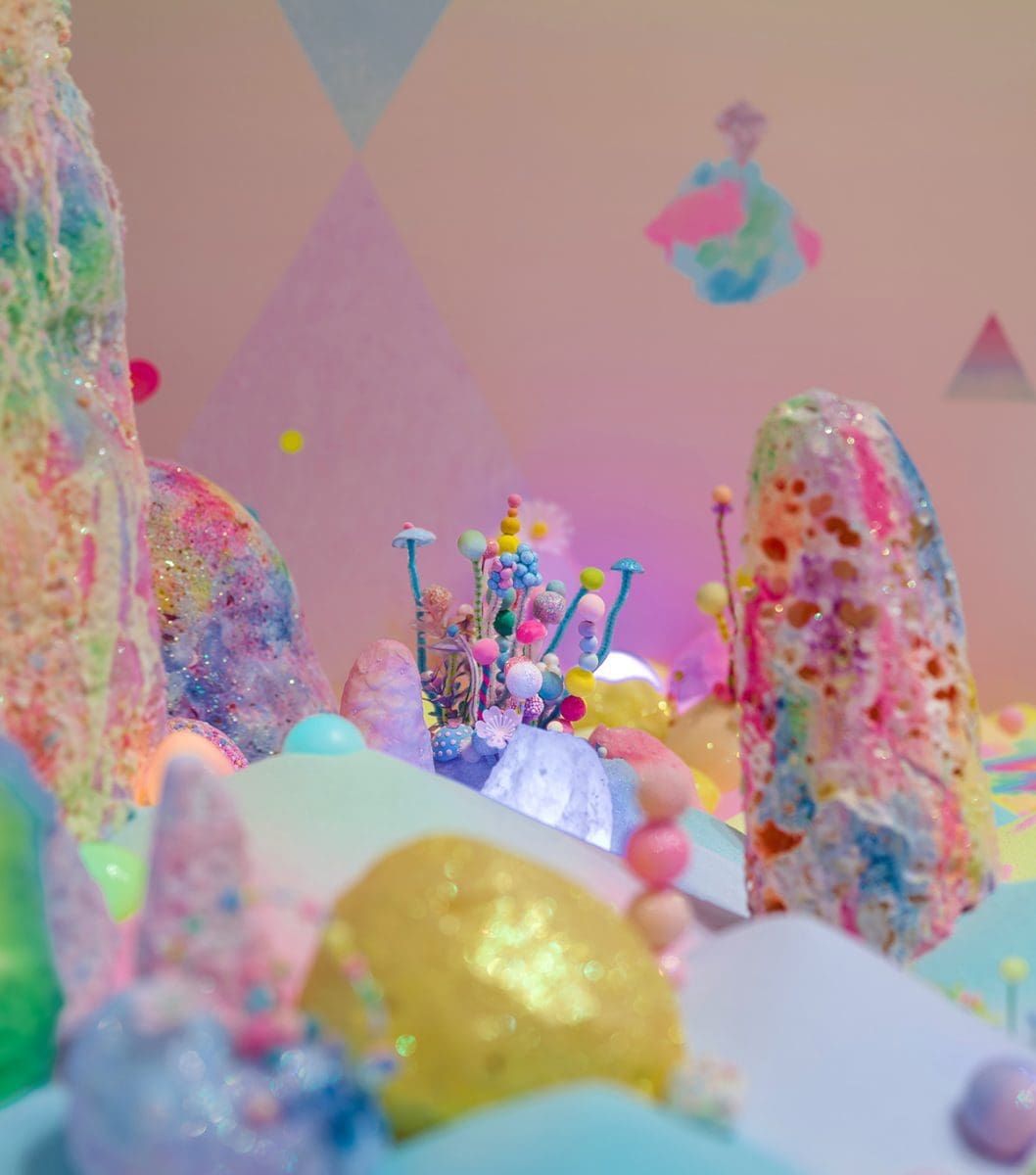
Pip and Pop, Newest New World, Shinsegae Gallery, Korea, 2015, mixed media. Photograph by Park Myungrae.

Pip and Pop, Journey in a Dream, Shinsegae Gallery, Korea, 2015, mixed media. Photograph by Park Myungrae.
The largest living thing on earth, Armillaria solidipes, is a gargantuan honey fungus. It lives beneath the soil in a fantastic network, sending up millions of charming honey-coloured toadstools, each secretly connected to the next, across nearly four kilometres of Oregon forest.
A bedrock of narrative tradition spans the continents, propagating characters, superstitions, fables and oral retellings across different cultures, each tinted with regional variation, but sprouting from the same cultural need for fiction and magic.
The universality of folklore is the daily bread of Perth artist Pip & Pop (Tanya Schultz). “All cultures have their own mythologies about places that don’t actually exist: utopias, or paradise,” she explains. “Schlaraffenland is a paradise made of food, where you can eat everything you want. That’s the German version. There’s also Luilekkerland, which is Dutch, and Cockaigne in France.
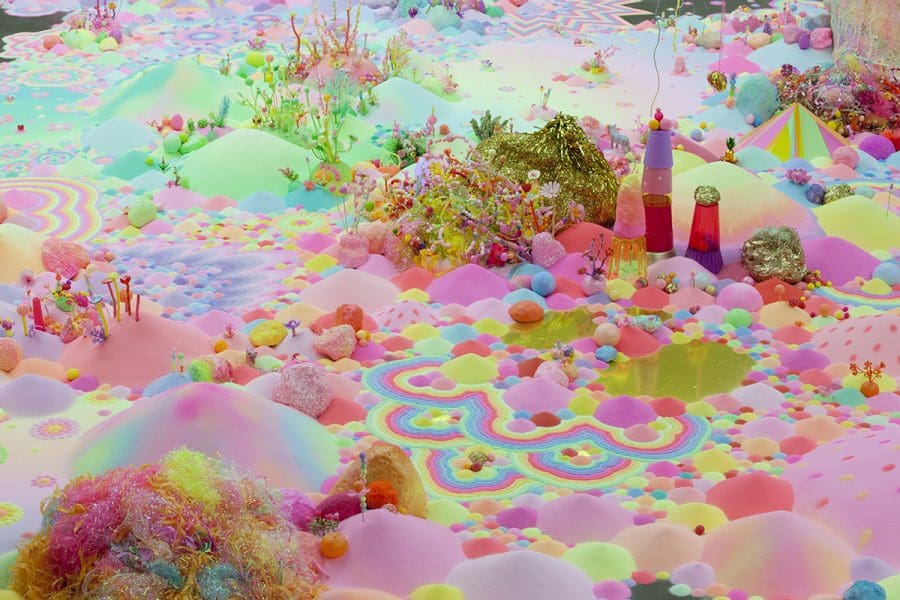
The German one is more savoury; it has lots of meat. The others are sweeter. When there was no food, and people were desperate, they would imagine the same kinds of paradise.” Place, mythology and substance thus come together in Schultz’s upcoming exhibition When Happiness Ruled, a large kinetic landscape installation built in PICA’s airy Central Galleries.
Though it uses topographical structures like ravines, mountains and plains, Schultz’s terrain will be a supernatural one, glistening under shifting lights and dotted with moving parts: mountains whirling; rocks rocking. This gentle animation is inspired by Schultz’s recent visit to Korea, where she learnt of a folk tradition in which mountains come to life: “There’s one about a spinning mountain at the centre of the earth. I am really interested in the idea of geology moving and having life.”
Prior to creating an installation, Schultz summons together a rabble of objects, substances and images in her studio: prints of wacky Japanese monsters are taped to the wall; something resembling a baked Alaska with a face gawks from atop a cabinet; plastic gemstones tinkle in the doorway. Short weeks before When Happiness Ruled opens, this trove of rainbow-coloured and normally supercilious items will be removed to the gallery, and sorted by colour, texture and size.
Within this palette of objects, you might expect to glimpse a My Little Pony toy or some other pink, branded item. Yet the charm of Schultz’s work is that her materials are so wholly crafted that they don’t look like anything you could buy off the shelf. Objects like a mint-green felted boulder or a cascade of pearlescent pebbles are completely original, even though their qualities are familiar and evocative.
Indeed, this is the joy of Schultz’s work; it opens a floodgate of vivid memories of objects, food and characters. At once I’m reminded of the gaudy, imaginary food-stuff from the film Hook, Polly Pockets, Tic Toc biscuits, my favourite Japanese peach character, humbugs and so on ad nauseam (perhaps literally, given the sweetness).
Seemingly constructed from nothing more substantial than fairy floss, glitter and whipped cream, and not for touching or tasting by visitors, this landscape will certainly be mirage-like, disquietingly unnatural and beyond reach.
Yet it’s the adults, not children, who approach such unreality with cynicism. “When you’re a kid you love it,” Schultz explains, “but when you’re older it becomes a little bit creepy.” Schultz often observes visitors reacting suspiciously to the fragrance emanating from her installations: “Sometimes people don’t realise they’re smelling sugar.” The sweetness, they assume, is either imagined or some synthetic trickery.
“When I build a landscape, I’m often thinking about scenes from films, or fables I’ve read”, says Schultz.
“I’m thinking: This is where this story happens”. When Happiness Ruled will be a home for the fables in Schultz’s collection, in which foxes hold weddings and kettles play tricks on their owners. A series of film clips will be screened alongside the exhibition, anchoring it to the rich cultural terrain from which Schultz draws, including HR Pufnstuf and the films of Akira Kurosawa.
All these diverse traditions go into the melting pot for When Happiness Ruled. It’s tempting to imagine Schultz as a witchy character, stewing cultural references into a honey fungus-like foundation from which all kinds of folkloric associations can be cultivated in the gallery.
When Happiness Ruled
Pip & Pop
Perth Institute of Contemporary Arts
12 November – 24 December